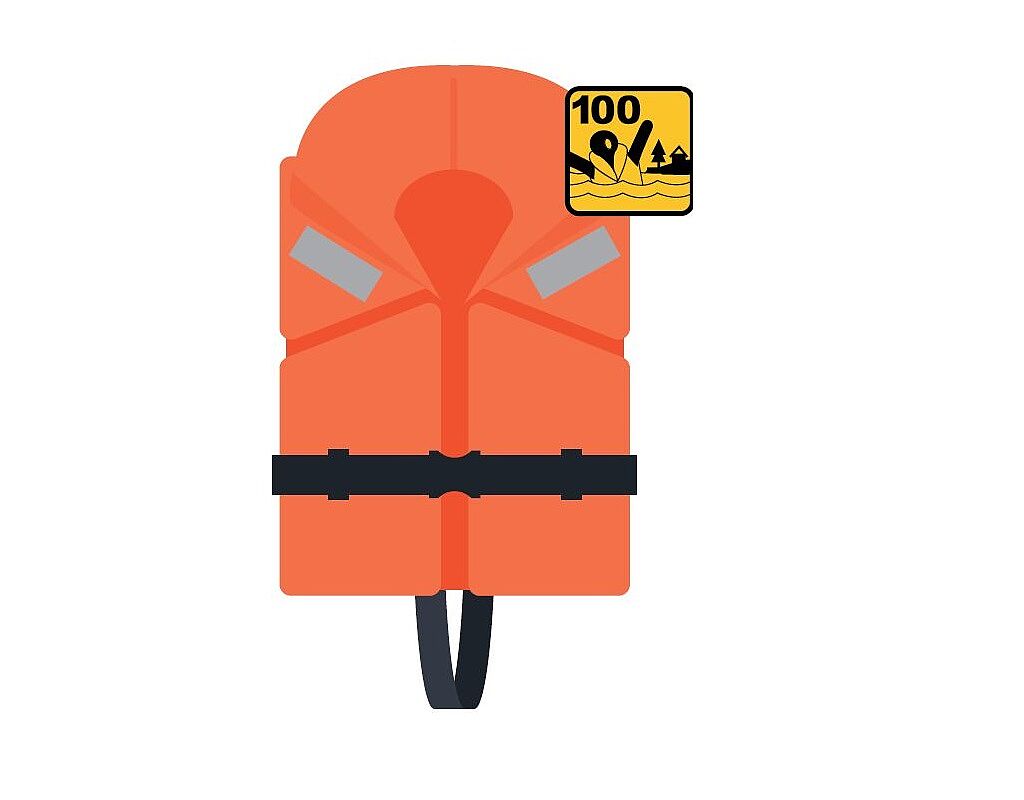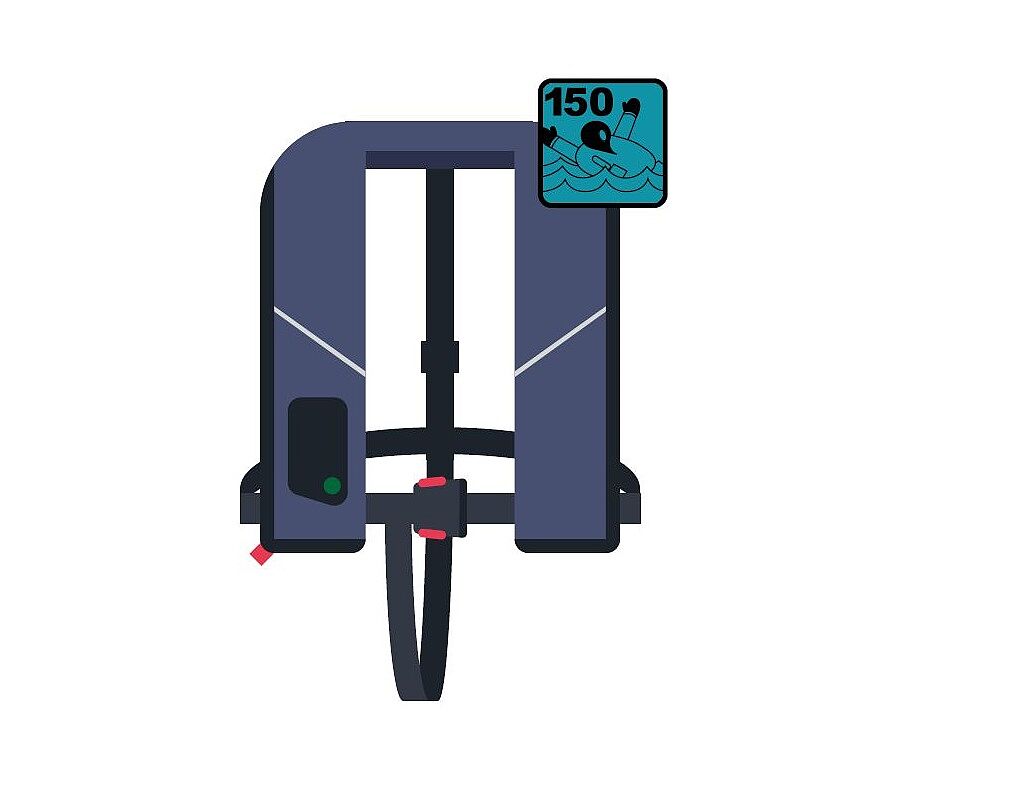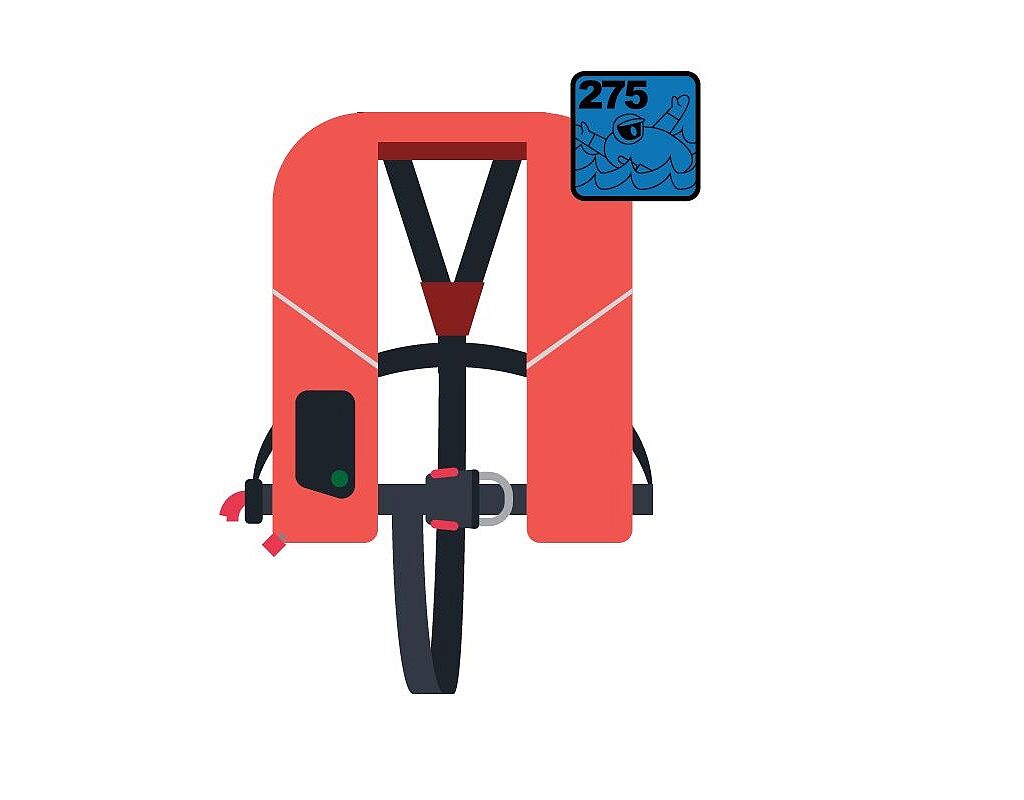The 1x1 of the life jacket
From dinghies to superyachts, the lifejacket is an absolutely necessary piece of on board equipment – it is the essential gadget of the seas. Or at least, it should be. If you can’t tell your floats from your flip flops, or if you’re about to invest in new life jackets for you, your family and crew, then read on – we’ve summarised the most important factors on the subject of selection, function and maintenance.

"Eureka!" Archimedes of Syracuse is said to have exclaimed when, quite by accident, he deciphered the principle of buoyancy while bathing. "I've found it!" Whilst the scientist hadn’t set out to discover the concept of a lifejacket, the groundwork had been done. Thanks to Archimedes' principle, it is clear: whether an object floats on water depends on the relationship between buoyancy and weight force. This buoyancy is great enough when the displaced volume is greater than the volume of water corresponding to the weight of the object. This not only benefits boats and yachts, but also ensures that lifejackets fulfil their purpose. Nowadays, it can take quite some time before boat owners experience their own eureka moment, with an almost unmanageable amount of lifejackets on offer and an array of classifications that would confuse any Greek scholar.
WHICH WAISTCOAT FOR WHAT?
Generally, the following categories are recognised: 100 Newton, 150 Newton and 275 Newton. The Newton unit should be familiar to anyone who ever sat through a physics lesson - it stands for force and thus describes the force of buoyancy.
But, do not be confused: Many manufacturers advertise other buoyancy specifications than the buoyancy classes presented here. However, these only refer to the so-called ‘real buoyancy’ that can be achieved. A waistcoat advertised as 180 Newton also falls into the 150 Newton category. In fact, the three categories only describe the minimum buoyancy that must be provided by a lifejacket. When looking for a suitable life jacket, the first question that should be asked is: Why do you need the lifejacket? Do you want to go out on the water with a dinghy, do you want to sail on a cruising yacht in coastal waters or do you want to go offshore fishing by motorboat? The market offers solutions tailored specifically to various forms of water sports, which can make the everyday wearing of a lifejacket more pleasant and user-friendly, thanks to sensible cuts and upgrade options.
The second question, which should be asked independently of the first answer, is: What clothing will I wear during my activity? Summer temperatures allow the use of lifejackets with less buoyancy and volume. If foul weather clothing is worn, then more buoyancy is going to be required. Air pockets under waterproof clothing in particular can quickly and adversely change the turning behaviour of a lifejacket, possibly meaning that a 150 Newton lifejacket is no longer sufficient.

100 NEWTON:
Life jackets classified as ‘from 100 Newton’ buoyancy provide the average adult with the buoyancy needed to wait for help in sheltered areas and inland waterways without heavy swells. 100 Newton models exist in both solid and automatic versions. Take caution: Lifejackets in this category have limited protection against passing out.

150 NEWTON:
These waistcoats are usually faint-proof and thus turn the person in the water into a safe floating position that can be maintained without any intervention on their part. These waistcoats are suitable for most coastal and marine environments. 150 Newton models exist almost exclusively as automatic waistcoats. In commercial shipping, solid waistcoats are also used in some cases, although these models severely restrict the radius of movement for the person wearing them.

275 NEWTON:
Lifejackets in the most powerful category have a buoyancy of 275 Newton, which is still sufficient when worn with heavy clothing such as oilskins. The 275 Newton is the first choice for ocean sailors and those likely to experience extreme weather conditions. These lifejackets can also be equipped with a spray hood, which slows down cooling of the head and allows breathing even when washed over in heavy seas.
CHILDREN'S VESTS
Today, solid life jackets suitable for even the smallest of children are available. They are manufactured to be extremely lightly and are suitable for small children from 5kg body weight and above. Automatic lifejackets are available for children weighing 15kg or more. These are of course much more comfortable to wear and a harness system can be attached via D-ring, to limit the risk of a child falling overboard in the first place.
Attention: Buoyancy aids and lifejackets are, as the names suggest, different pieces of equipment. Buoyancy aids provide support but they only offer a buoyancy of 50 Newton, so the wearer has to swim along him/her self. They are therefore never suitable as a means of rescue.
FIT AND CORRECT USE
Once you have identified the category of jacket required, it's time to measure up for the finer details. Many suppliers provide good guidance online however, if you are not familiar with the product, we recommend you visit a specialist shop where a member of staff can advise you appropriately. Watch out for sales spiel, because there is no such thing as "the best” lifejacket. Whether and how a lifejacket fits, how you feel in it and, crucially, how consistently you are prepared to wear it on board depends on very individual points. Only when you put it on and adjust it correctly do you get a feeling for whether the lifejacket suits your physique and your everyday on board routine.
A lifejacket should be put on like a normal jacket, and should be adjusted as tightly as possible without constricting the wearer. If you can just about squeeze two fingers between the waist belt fastener and the wearer's body, then the lifejacket fits correctly.
The fit of the crotch strap is also important. It should be tightened as much as possible so that the lifejacket cannot slip during use. Without a correctly fitted crotch strap, a safe position in the water cannot be guaranteed and, in addition, loose hanging straps on deck increase the potential for a fall.
If the waistcoat has a lifebelt, it must be certified according to DIN EN ISO 12401. A corresponding notice can then be found on the belt. If the lifejacket has a D-ring but no proof of certification, the D-ring must not be used for lifting the wearer back on board under any circumstances, as it must be assumed that it cannot withstand the load of a person's body weight. If two D-rings are present, both must be used together in any and all circumstances. Of course, the other end of the lifeline or care line must always be hooked into a safe and secure place on board - special eyelets, the handholds on the steering column or on deck, special stretch ropes or shrouds and stages are suitable for this. Railing wires are not suitable, as there is a risk of the wearer hitting the hull when falling overboard. Halyards, sheets or the helm wheel are logically prohibited due to their mobility.
MAINTENANCE OF AUTOMATIC LIFEJACKETS
Lifejackets are given a service life of ten years by the manufacturer. Beyond that, there is a risk of material fatigue of the plastic-coated fabrics and moulded parts. During this 10-year period, however, a lifejacket requires regular maintenance at intervals of no more than two years. This maintenance is specified by the Professional Association for Sea Rescue Equipment and strongly recommended by Pantaenius. Member companies issue service badges that document the month and year of the next service due, and are not just a coincidental reminder of a TÜV badge.
From the tenth year onwards, a lifejacket must be serviced annually, with the last possible service offered for jackets with an age of 14 years.
Note: Maintenance appointments for a lifejacket that has exceeded the 10-year service period can only be carried out by the original manufacturer and not by any outside or third party companies.
Caution: The release mechanism for an automatic waistcoat is controlled by a tablet that disintegrates upon contact with moisture. High humidity over a longer period of time can affect this tablet. Long-term users should therefore check the tablet at least once, even in maintenance-free years. Replacement tablets are available very economically from specialist dealers.
Drying a wet lifejacket in the sun can also be problematic for the tablet. This can cause the tablet to shrink or become brittle. Proper packing of an inflatable lifejacket is essential for proper deployment in an emergency. If an involuntarily deployed lifejacket needs to be made ready again, the instruction manual will provide detailed instructions. If you don't have the confidence to do this yourself, contact your dealer, who will be happy to assist you with likely just a small fee to cover material costs. After all, we all have a responsibility in helping to keep each other safe on the water.
DOES IT STILL FLOAT OR CAN IT GO?
Recycling and up-cycling are topics that many people feel committed to. Some manufacturers therefore offer the option to buy or replace the protective cover and float separately. This saves resources and can even a few euros.
CHECKLIST FOR BUYING A LIFEJACKET:
- Planned use: 100 / 150 / 275 Newton
- Solid or inflatable
- Required fit and freedom of movement
- Possibility to attach crotch strap and lifeline
- Possibility to integrate marine beacon
